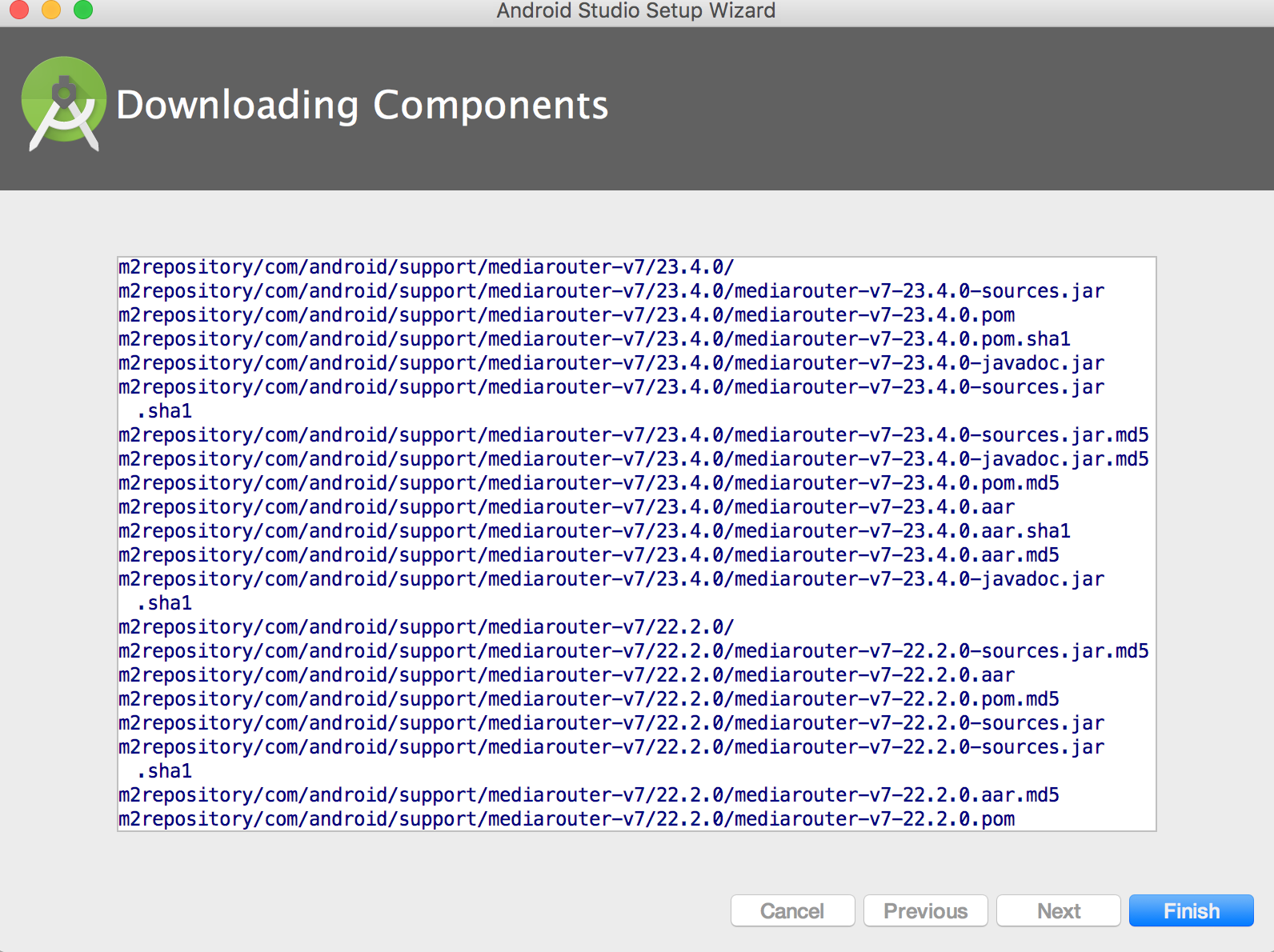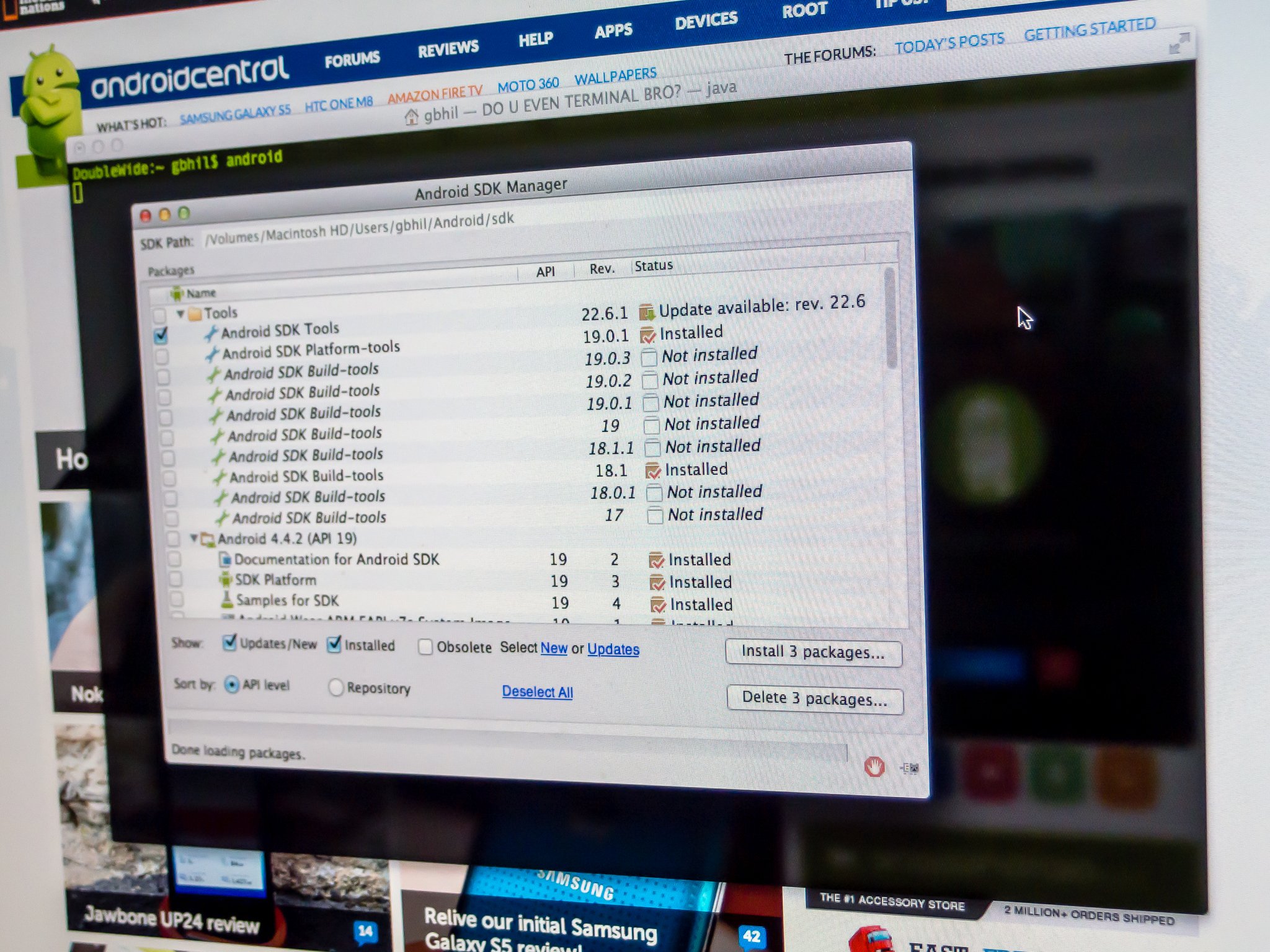At the same time, Android Studio will give you access to the Android SDK or ‘Software Development Kit’. Think of this as an extension to the Java code that allows it to run smoothly on Android devices and take advantage of the native hardware. Android Studio is a new IDE for the Android operating system. Launched by Google, it offers new tools for developing apps and is a good alternative to Eclipse, currently the most popular IDE. When you create a new project on Android Studio, the project's structure will appear with almost all the files in one SRC directory.
- Install Android Sdk Mac Os
- Android Sdk Download Mac
- Get The Sdk Android
- Mac Install Android Sdk
- Android Sdk Tools Download
Android Studio on Mac OS does not show Android SDK in preferences. Ask Question. Up vote-1 down vote favorite. I cannot see Android SDK section in Android Studio preferences! This is the preferences which i see. How to completely uninstall Android Studio on Mac? Hex transparency in colors. Android Studio installation on. Standalone Android SDK Tools. To launch the Android SDK manager without Android Studio, open a terminal and navigate to the tools/ directory of the SDK Tools Package location, then execute the program ‘android’.
Where should the Android SDK be installed on Mac OS X?
Android SDK Tools is a component for the Android SDK. It includes the complete set of development and debugging tools for Android. It is included with Android Studio. The sections below provide notes about successive releases of the SDK Tools, as denoted by revision number. To ensure you have the.
George Stocker♦11 Answers
Now the android-sdk is migrated from homebrew/core to caskroom/cask.
and install android-sdk using
You will have to add the ANDROID_HOME to profile (.zshrc or .bashrc)
The easiest (and standard) way to install Android SDK under OS X is to use brew.
brew install android-sdk
If you do not have homebrew, here's how to get it.

This will install Android SDK into /usr/local/Cellar/android-sdk/ and, at this moment, this is the best location to install it.
My personal preference is to put it in ~/opt/local/android-sdk-mac or /Developer/android-sdk-mac the latter being where Xcode and all the Apple Dev tools are held.
When I installed Android Studio 1.0 it ended up in
/Library/Android/sdk/
sudo bangbangBy default the android sdk installer path is ~/Library/Android/sdk/
You can install android-sdk in different ways
homebrew
Install brew using command from brew.shInstall
android-sdkusingNow
android-sdkwill be installed in/usr/local/opt/android-sdkIf you installed android studio following the website,
android-sdkwill be installed in~/Library/Android/sdk
I think these defaults make sense and its better to stick to it
GrahamInstall Android Sdk Mac Os
From http://developer.android.com/sdk/index.html, it seems that you can install the SDK anywhere, so long as you
- 'execute the android tool in the
<sdk>/tools/folder' - Add the
<sdk>/toolsdirectory to your system path
More info can be found here: http://developer.android.com/sdk/installing.html
Justin JohnsonJustin JohnsonI just have mine in MyUser/Documents/Development. I'm the only one that used my Mac, so I didn't need to worry about making it accessible system-wide.
I put mine in /Developer/SDKs I had to authenticate to do that…but since there's no consensus I thought that it sounded like a place I'd remember.
I ended up placing my at ~/sdks/android-sdk-mac_x86. I like to keep all of my SDKs in one place and for me an sdk folder under my home directory makes the most sense.
Carl ManasterI have been toying with this as well. I initially had it in my documents folder, but decided that didn't make 'philosophical' sense. I decided to create an Android directory in my home folder and place Eclipse and the Android SKK in there.
finiteloopfiniteloopNot the answer you're looking for? Browse other questions tagged androidconfigurationmacos or ask your own question.
I have just installed Android Studio 0.2.2. I want to add the SDK tools to the $PATH, which are in this folder:
so that I can use them with e.g. Phonegap.
But after I add this folder to the $PATH, it still keeps saying:
android: command not found
Oddly, I can't run any of the executables in that folder even when I cd to that folder and type their names.
What am I doing wrong?
nbro keune
keune5 Answers
It seems that newer versions of Android Studio don't come bundled with the SDK. So, /Applications/Android Studio.app/sdk/tools will no longer work.
After launching the SDK Manager from Android Studio, I realized the new path is /Users/$USER/Library/Android/sdk/tools.
Steps
Open your
~/.bash_profilefile by issuing the commandopen ~/.bash_profileon the terminalAdd the following lines to the end of that file
export PATH=/Users/$USER/Library/Android/sdk/tools:$PATHexport PATH=/Users/$USER/Library/Android/sdk/tools/bin:$PATHexport PATH=/Users/$USER/Library/Android/sdk/platform-tools:$PATH
Save and close the
~/.bash_profilefileIf you want the changes to take action on the current terminal, then
source ~/.bash_profile; otherwise, close and re-open the terminal, and the changes will take place automatically
 nbro
nbroYou can add this folder to you PATH in .bash_profile (a hidden file in the home folder of the user):
and then reopen the terminal application.
If you need an environment for all your UI apps, you can use the .launchd.conf (or /etc/launchd.conf for all the users).
Put this in your ~/.profile:
Android Sdk Download Mac
The build tools are unlike the others in that they're in subfolders. Eg there's build-tools/23.0.3, build-tools/25.0.1, build-tools/25.0.2... so this chooses the most recent one.
You are getting bit by the escape character.
The reason tiziano's answer works for him is because the export command needs that backslash after 'Android'
however, you are probably editing /etc/paths. When you put the path in there, you don't need the backslash, just put the lines:
/Applications/Android Studio.app/sdk/tools/Applications/Android Studio.app/sdk/platform-tools
in /etc/paths, and you are good to go.